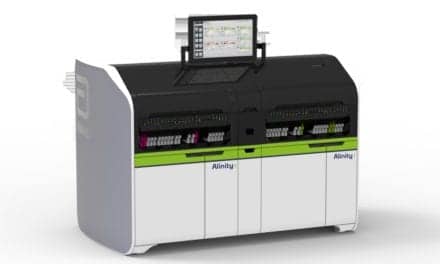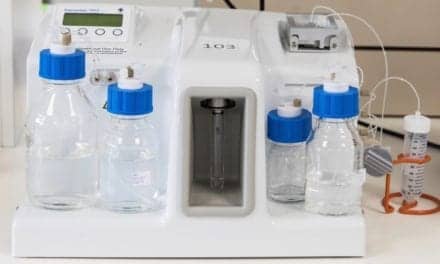MDxHealth, Irvine, Calif, and Herstal, Belgium, has recently presented study data demonstrating that the company’s SelectMDx urine test outperforms the Prostate Health Index (PHI) blood test and magnetic resonance imaging (MRI) for the detection of prostate cancer. SelectMDx is a proprietary urine-based molecular diagnostic that offers a noninvasive liquid biopsy method for assessing a man’s risk for prostate cancer.
The study compared the SelectMDx urine test by MDxHealth with the prostate health index (PHI) blood test from Beckman Coulter, Brea, Calif, for identifying patients with high-grade aggressive prostate cancer who would likely benefit from prostate biopsy or a multiparametric MRI scan.
“High-grade prostate cancer has poor clinical pronosis; thus, clinicians have to rely on prostate cancer biomarkers and multiparametric magnetic resonance imaging to screen patients prior to prostate biopsies,” explains E. David Crawford, MD, professor of surgery, urology, and radiation oncology at the University of Colorado. “We have clearly shown in this exploratory study that SelectMDx is better suited to identify patients with high-grade prostate cancer prior to biopsy compared to the PHI blood test.”
The study encompassed 39 men with a median age of 65 years and mean serum prostate-specific antigen (PSA) level of 6.4 ± 5.9 ng/mL who had previously received inconclusive results from a transrectal ultrasound biopsy. Patients were tested with the SelectMDx urine test, the PHI blood test, and a multiparametric MRI prior to undergoing a transperineal mapping biopsy.

Table 1. Summary of the performance of SelectMDx, PHI, and mpMRI (PI-RADS >3) for detecting high-grade prostate cancer.
The mapping biopsy identified 34 out of 39 patients (87%) as having prostate cancer. Of those 34 patients, 15 (44%) had high-grade prostate cancer, and 18 (53%) had clinically significant prostate cancer (high-grade or tumor volume ±0.5 cc). There were no significant differences among the receiver operating characteristic curves of SelectMDx, PHI, multiparametric MRI, prostate imaging reporting and data system (PI-RADS) scoring, PSA, PSA density, pro-PSA, and free PSA for the detection of high-grade prostate cancer. Multivariate logistic regression analyses revealed that the SelectMDx test was significantly better than the other tests for detection of high-grade prostate cancer (ß = 5.57, p = 0.001) and clinically significant prostate cancer (ß = 4.05, p = 0.004), with an overall accuracy of 82% and 74%, respectively.
“We are very pleased with the outcome of this study, which clearly demonstrates the superiority of SelectMDx over PHI blood testing in identifying patients at high risk for prostate cancer, with high sensitivity and specificity,” says Jan Groen, PhD, CEO of MDxHealth. “Combined with enhancing multiparametric MRI, SelectMDx can spare men from prostate biopsy, offering a valuable noninvasive alternative to this expensive, painful, invasive, and often inaccurate procedure.
“We maintain our focus on the commercialization and roll-out of SelectMDx in the United States and Europe and continue to see increased usage and adoption in clinical practice, with over 30,000 patients tested since the launch of SelectMDx 2 years ago,” Groen adds.
For further information, visit MDxHealth.
Reference
- Crawford ED, Arangua P, La Rosa FG, et al. Comparison of SelectMDx, Prostate Health Index, and MRI for diagnosis of high-grade prostate cancer [abstract, online]. Presentation at the 2019 International Prostate Cancer Update, Beaver Creek, Colo, January 24–27, 2019. Available at: https://grandroundsinurology.com/wp-content/uploads/2019/01/ipcuposter_abstracts_final-1.pdf. Accessed February 25, 2019.





